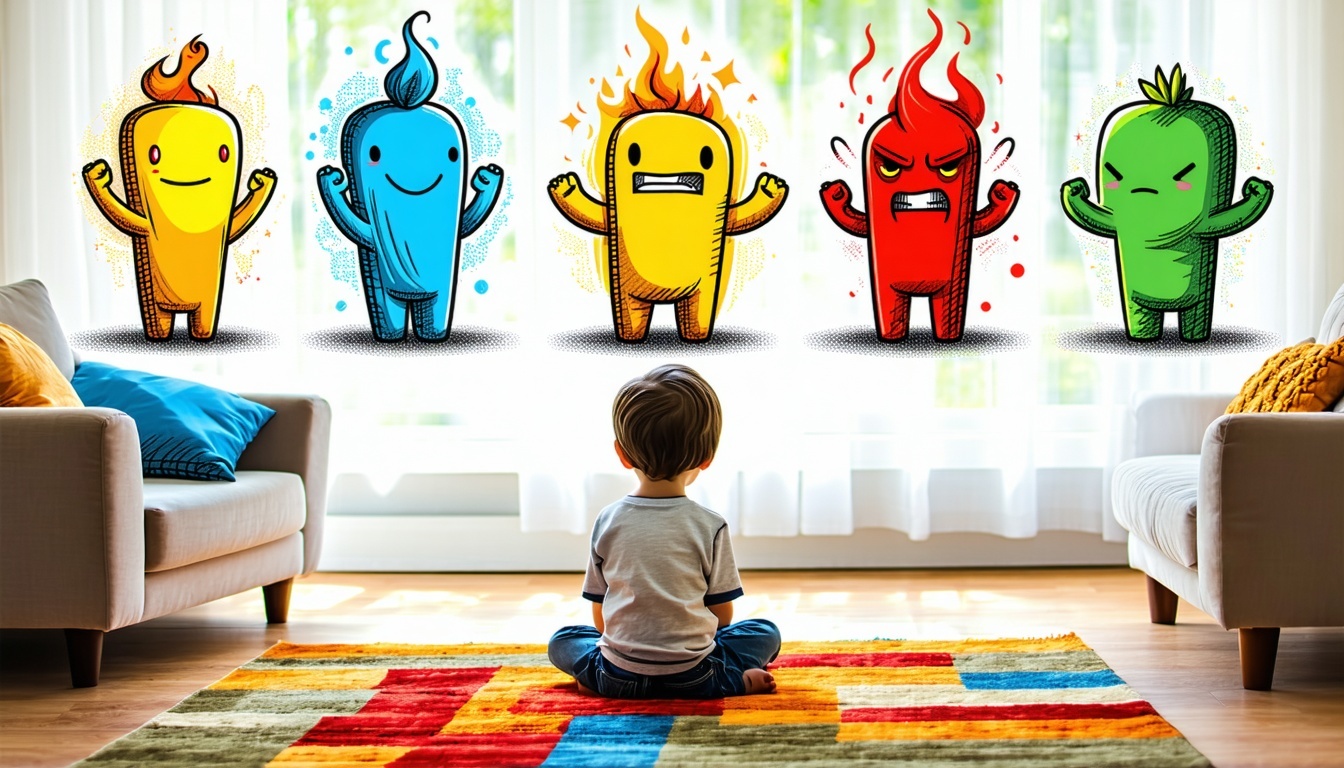
By Melissa Meyer, DNP, PMHNP
Do you remember the first time you watched Disney’s Inside Out?
For me, it was like someone turned on the lights inside my professional brain and my childhood heart. Suddenly, all those big, messy feelings we try so hard to “fix” in kids—anger, sadness, fear—were right there on screen, colorful and important.
Not problems. Parts.
And that’s where today’s blog begins: with an invitation to help your child meet their feelings—not just manage them, but truly get to know them.
🎭 Feelings Aren’t Bad—They’re Messengers
Let’s imagine for a moment that each feeling is a character, kind of like Joy, Sadness, Fear, Anger, and Disgust from the movie.
They all live in your child’s “Headquarters.”
They all have a purpose.
They all want to be heard.
And just like the movie shows us—when one emotion gets stuck at the control panel, things go sideways. But when we allow all the feelings to have a voice? Something beautiful happens:
Balance. Growth. Emotional literacy.
That’s the goal—not emotional perfection, but emotional awareness.
🧠 Why Emotional Literacy Matters
Emotional literacy is the ability to:
-
Notice what you're feeling
-
Name it (without shame)
-
Understand where it's coming from
-
Know what to do with it
That’s a huge skill—and kids don’t just “pick it up.” We teach it, moment by moment, meltdown by meltdown, through modeling and mindfulness and a sprinkle of metaphorical magic.
When a child can name what they feel, they’re more likely to:
-
Calm themselves faster
-
Ask for help appropriately
-
Build stronger friendships
-
Advocate for their needs
-
Feel proud of who they are
And when you, as a parent, start seeing feelings as helpful (not scary), your responses shift too—from control to connection.
🌈 Meet the Feelings (Melissa Style)
Here’s how I introduce these emotions in therapy—and how you can bring them to life at home:
😊 Joy
The sparkly one. Loves laughter, sunshine, and sharing. Shows up during playtime, cuddles, and dance parties.
Joy says: “Let’s celebrate this moment!”
😢 Sadness
The quiet, thoughtful one. Needs hugs, cozy spaces, and time to process. Helps us reflect and ask for comfort.
Sadness says: “I need to slow down and be held.”
😡 Anger
The fireball. Quick to react but quick to cool when heard. Wants fairness and safety. Often shows up when boundaries are crossed.
Anger says: “Something feels wrong.”
😨 Fear
The safety scout. Scans for danger, both real and imagined. Helpful in moderation. Needs reassurance and information.
Fear says: “Please keep me safe.”
😒 Disgust
The boundary setter. Knows what feels “off” and when something doesn’t sit right. Helps with identity and preference.
Disgust says: “This isn’t for me.”
You can draw these characters with your child, make paper puppets, or create a “Feelings Headquarters” board where kids can move each feeling to the center depending on how their day is going.
🧩 What To Do When Feelings Get Big
When a child is overwhelmed, the first step isn’t “fixing” the feeling—it’s naming it.
Try this script:
“Looks like Anger might be at the control panel right now. Want to take some deep breaths with me and see what he’s trying to tell us?”
You’re helping your child:
-
Separate themselves from the emotion
-
Feel safe expressing it
-
Get curious instead of ashamed
And that, my friend, is the start of a lifetime of emotional strength.
💬 Phrases That Support Emotional Literacy
Swap “You’re okay!” with:
“It’s okay to feel [sad/mad/scared]. I’m right here.”
Swap “Calm down!” with:
“Let’s figure out what this feeling needs.”
Swap “Stop crying!” with:
“Your tears tell me something matters. Want a hug or space?”
These gentle shifts show your child that all feelings are welcome—and none are too big to handle together.
💖 A Note from Melissa
At Hazelwood, we believe that structure helps children thrive—and part of that structure is knowing that emotions aren’t “too much.” They’re part of being fully, beautifully human.
Your child isn’t behind because they feel deeply.
They’re learning. They’re expanding.
They’re building a lifelong skill—one meltdown, one giggle, one honest moment at a time.
You’re not doing it wrong.
You’re building emotional literacy, one connection at a time.
🎨 Try This Today:
Print or draw five feeling characters and ask your child, “Who’s at your control panel today?” You’ll be surprised how easily they can tell you when they have the words and the safety to do so.
Tag @HazelwoodMentalHealth with your “Feelings Headquarters” art using #InsideOutsideTogether—we’d love to see how your family is learning to name what matters.
